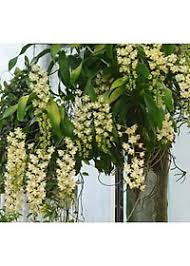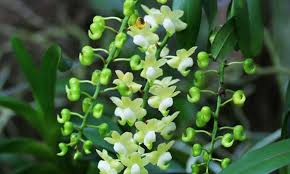
## Table of Contents
1. **Introduction**
2. **Understanding Hydroponics**
– 2.1 What is Hydroponics?
– 2.2 Benefits of Hydroponics for Growing Orchids
3. **Characteristics of White Egg Orchids**
– 3.1 Overview of White Egg Orchids
– 3.2 Growth Requirements
4. **Types of Growing Media for Hydroponic White Egg Orchids**
– 4.1 Rockwool
– 4.2 Clay Pellets
– 4.3 Coconut Coir
– 4.4 Perlite
– 4.5 Hydroton
– 4.6 Vermiculite
5. **Choosing the Right Growing Media for Your Hydroponic System**
– 5.1 Factors to Consider
– 5.2 Combining Different Media
6. **Setting Up Your Hydroponic System for White Egg Orchids**
– 6.1 Types of Hydroponic Systems
– 6.2 How to Set Up a Hydroponic System
7. **Care and Maintenance of Hydroponic White Egg Orchids**
– 7.1 Watering and Nutrient Management
– 7.2 Monitoring pH Levels
– 7.3 Light Requirements
8. **Pest Management in Hydroponic Orchids**
– 8.1 Common Pests
– 8.2 Prevention and Treatment
9. **Troubleshooting Common Issues in Hydroponic Orchids**
– 9.1 Nutrient Deficiencies
– 9.2 Root Rot
– 9.3 Algae Growth
10. **Conclusion**
11. **FAQs**
—
## 1. Introduction
Growing White Egg Orchids (Phalaenopsis amabilis) hydroponically is an innovative method that provides optimal growing conditions and can yield stunning results. This approach relies on water-based systems instead of soil, allowing for precise control over nutrients, moisture, and pH levels. Selecting the appropriate growing media is crucial for the success of hydroponic orchids. In this comprehensive guide, we will explore various suitable growing media for White Egg Orchids in hydroponic systems, along with tips for successful cultivation.
## 2. Understanding Hydroponics
### 2.1 What is Hydroponics?
Hydroponics is a method of growing plants without soil, using nutrient-rich water solutions to deliver essential elements directly to the plant roots. This technique allows for enhanced growth rates, better yields, and the ability to grow plants in environments where traditional soil gardening may be challenging.
### 2.2 Benefits of Hydroponics for Growing Orchids
– **Faster Growth:** Hydroponically grown orchids tend to grow faster than those in soil, as they have direct access to nutrients.
– **Controlled Environment:** Growers can easily regulate factors such as nutrient levels, pH, and moisture, creating ideal conditions for orchid growth.
– **Space Efficiency:** Hydroponics allows for vertical and space-saving designs, making it suitable for limited areas like balconies or small gardens.
## 3. Characteristics of White Egg Orchids
### 3.1 Overview of White Egg Orchids
White Egg Orchids are renowned for their beautiful, long-lasting white flowers. Understanding their growth requirements is essential for successful hydroponic cultivation.
### 3.2 Growth Requirements
– **Light:** Bright, indirect light is necessary for optimal growth.
– **Temperature:** They thrive in temperatures between 65°F to 85°F (18°C to 29°C).
– **Humidity:** Humidity levels of 40% to 70% are ideal for White Egg Orchids.
## 4. Types of Growing Media for Hydroponic White Egg Orchids
Choosing the right growing medium is essential for the health and vitality of hydroponic orchids. Here are some of the most suitable options:
### 4.1 Rockwool
Rockwool is a popular choice among hydroponic growers due to its excellent water retention and aeration properties.
– **Advantages:** It retains moisture well, promotes good air circulation, and is sterile, reducing the risk of disease.
– **Disadvantages:** Rockwool can be challenging to dispose of, as it is not biodegradable.
### 4.2 Clay Pellets
Clay pellets are another widely used medium for hydroponics. These small, round balls made from fired clay provide excellent drainage and aeration.
– **Advantages:** They are lightweight, reusable, and offer good support for plant roots.
– **Disadvantages:** Clay pellets can dry out quickly, requiring careful monitoring of moisture levels.
### 4.3 Coconut Coir
Coconut coir, made from the fibrous husks of coconuts, is an eco-friendly option that offers great moisture retention and aeration.
– **Advantages:** It is biodegradable, renewable, and helps maintain consistent moisture levels.
– **Disadvantages:** Coconut coir can break down over time, necessitating replacement.
### 4.4 Perlite
Perlite is a volcanic glass that is heated and expanded to create a lightweight, porous material that is often used in hydroponic mixes.
– **Advantages:** It provides excellent aeration and drainage while retaining some moisture.
– **Disadvantages:** Perlite can create a dusty environment during handling, which may be irritating to the lungs.
### 4.5 Hydroton
Hydroton, also known as expanded clay aggregate, is made from natural clay that is heated and expanded into lightweight, round balls.
– **Advantages:** It offers excellent drainage and aeration, is reusable, and does not break down over time.
– **Disadvantages:** Like clay pellets, Hydroton can dry out quickly, so regular monitoring is needed.
### 4.6 Vermiculite
Vermiculite is a mineral that expands when heated, creating a lightweight medium that retains moisture and nutrients.
– **Advantages:** It retains moisture well and provides good aeration.
– **Disadvantages:** Vermiculite can break down over time and may compact, reducing its aeration properties.
## 5. Choosing the Right Growing Media for Your Hydroponic System
### 5.1 Factors to Consider
When selecting a growing medium for your hydroponic White Egg Orchids, consider the following factors:
– **Moisture Retention:** The medium should retain moisture without becoming waterlogged.
– **Aeration:** Good air circulation is vital for healthy root development.
– **Nutrient Retention:** The medium should retain nutrients while allowing for proper drainage.
### 5.2 Combining Different Media
In many cases, a combination of growing media can provide the best results. For example, mixing coconut coir with perlite or clay pellets can enhance moisture retention while ensuring proper aeration.
## 6. Setting Up Your Hydroponic System for White Egg Orchids
### 6.1 Types of Hydroponic Systems
Several hydroponic systems can be used for growing White Egg Orchids:
– **Deep Water Culture (DWC):** Roots are submerged in nutrient-rich water, allowing for rapid growth.
– **Nutrient Film Technique (NFT):** A thin film of nutrient solution flows over the roots, providing constant moisture.
– **Ebb and Flow System:** Water floods the growing area and then drains away, providing nutrients to the orchids.
### 6.2 How to Set Up a Hydroponic System
1. **Choose a System:** Select the hydroponic system that best suits your needs and space.
2. **Prepare the Growing Medium:** Depending on your choice, prepare your growing media accordingly.
3. **Add Nutrient Solution:** Fill your system with a balanced nutrient solution, ensuring it meets the needs of orchids.
4. **Plant Your Orchids:** Place the White Egg Orchids in the growing medium, ensuring the roots are well supported.
## 7. Care and Maintenance of Hydroponic White Egg Orchids
### 7.1 Watering and Nutrient Management
In a hydroponic system, managing water and nutrients is crucial:
– **Regular Monitoring:** Check the nutrient solution regularly and refill it as needed.
– **Dilution:** Ensure the nutrient solution is diluted according to the manufacturer’s instructions.
### 7.2 Monitoring pH Levels
Maintaining the proper pH level is essential for nutrient absorption:
– **Ideal pH Range:** The ideal pH for hydroponic orchids is between 5.5 and 6.5.
– **Adjustments:** Use pH Up or pH Down solutions to adjust levels as necessary.
### 7.3 Light Requirements
White Egg Orchids require bright, indirect light for optimal growth:
– **Lighting Solutions:** Consider using grow lights if your balcony or indoor space lacks sufficient natural light.
– **Duration:** Aim for 12-14 hours of light per day for best results.
## 8. Pest Management in Hydroponic Orchids
### 8.1 Common Pests
Even in a hydroponic system, pests can pose a threat to your orchids:
– **Mealybugs:** These small, white insects can harm the plants by feeding on sap.
– **Spider Mites:** These tiny pests thrive in dry conditions and can cause leaf damage.
### 8.2 Prevention and Treatment
– **Regular Inspections:** Check your plants frequently for signs of pests or disease.
– **Natural Remedies:** Use insecticidal soap or neem oil to treat infestations.
## 9. Troubleshooting Common Issues in Hydroponic Orchids
### 9.1 Nutrient Deficiencies
Identifying and addressing nutrient deficiencies is crucial for plant health:
– **Symptoms:** Yellowing leaves may indicate nitrogen deficiency, while brown leaf edges can signal potassium deficiency.
– **Solution:** Adjust your nutrient solution based on the specific deficiency identified.
###
9.2 Root Rot
Root rot can occur if the roots are constantly submerged in water:
– **Symptoms:** Dark, mushy roots are a sign of root rot.
– **Solution:** Remove affected roots and improve drainage in your system.
### 9.3 Algae Growth
Algae can thrive in hydroponic systems, competing for nutrients:
– **Prevention:** Cover exposed surfaces to block light and reduce algae growth.
– **Solution:** Clean affected areas and adjust nutrient levels as needed.
## 10. Conclusion
Hydroponic cultivation of White Egg Orchids can be a rewarding experience, providing stunning blooms and enhanced growth potential. By selecting suitable growing media, setting up an effective hydroponic system, and maintaining proper care, you can create an ideal environment for your orchids to thrive. With attention to detail and a little experimentation, you’ll enjoy the beauty of these exquisite flowers in your home.
## 11. FAQs
### 1. **Can I grow White Egg Orchids in soil instead of hydroponics?**
– While soil can be used, hydroponics offers more precise control over nutrients and water.
### 2. **What is the best nutrient solution for hydroponic orchids?**
– A balanced nutrient solution specifically formulated for orchids is recommended.
### 3. **How often should I change the nutrient solution in my hydroponic system?**
– It’s best to change the nutrient solution every 2-4 weeks, depending on the growth stage.
### 4. **Can I use tap water for my hydroponic system?**
– Tap water can be used, but it’s essential to test the pH and nutrient levels.
### 5. **What is the ideal temperature for hydroponic orchids?**
– The ideal temperature for White Egg Orchids is between 65°F to 85°F (18°C to 29°C).
By following this comprehensive guide, you will be well-equipped to select the best growing media for your hydroponic White Egg Orchids and ensure their successful growth and blooming. Happy gardening!


